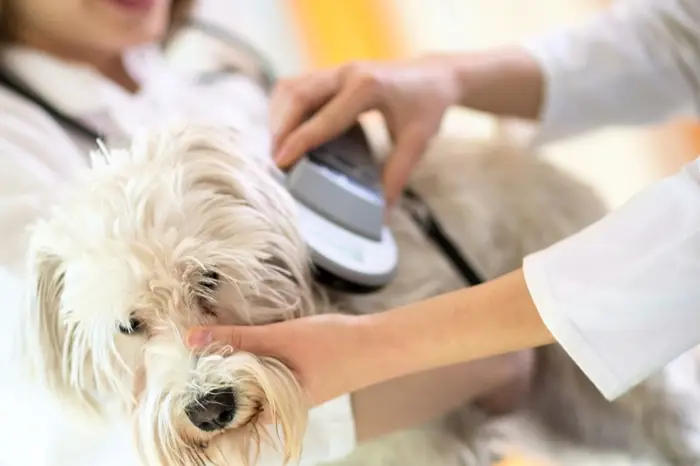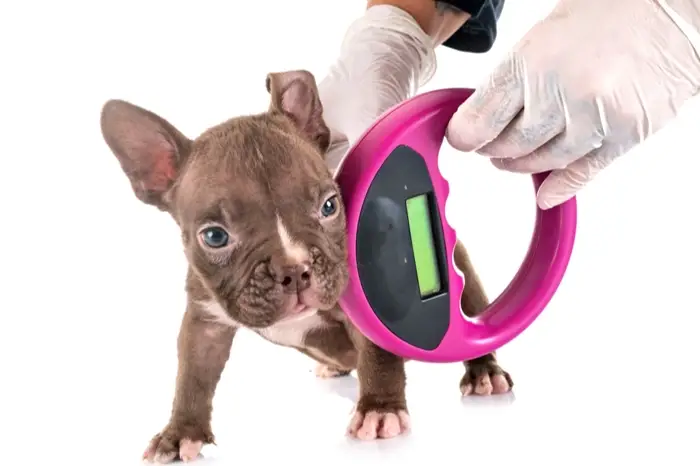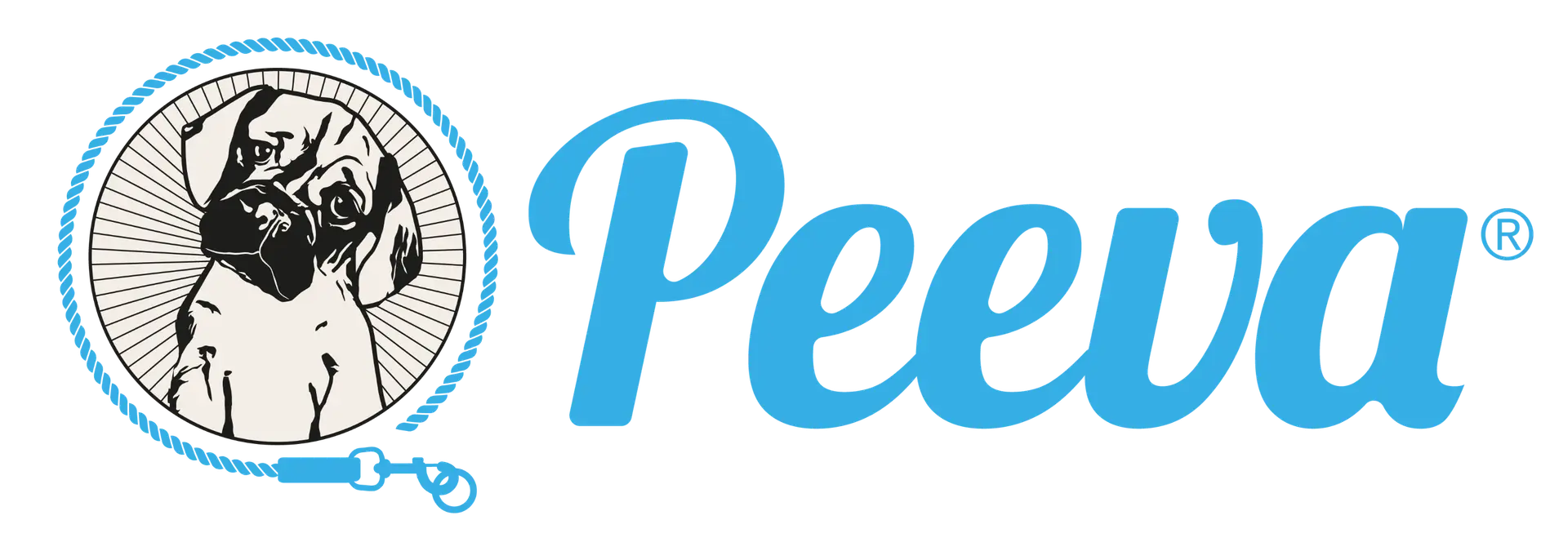Lost pets come home with Peeva.
Get Pet Details Instantly: The Role of Modern Technology in Pet Identification
Technological advancements have revolutionized pet care, including how we identify and track our furry companions. Putting a name tag on a collar is no longer the only means of identifying pets. In today’s world, a microchip scanner can instantly reveal information about a pet’s identity, medical history, and owner. This evolution of pet identification is not just a testament to technological advancement but also a boon to dog owners and animal lovers who are always looking for efficient ways to ensure their pets’ safety.
Peeva’s innovative microchip technology amplifies this evolution, offering a unified system that integrates pet identification with accessible medical records.

The Basics of Pet Microchips
At the heart of modern pet identification technology lies the microchip. A microchip is a tiny electronic chip, roughly the size of a grain of rice, usually implanted just under the pet’s skin between the shoulder blades. This procedure is quick, relatively painless, and akin to a regular vaccination shot. Each microchip contains a unique identification number that can be read by a scanner. When a scanner is passed over the area of the microchip, it transmits the chip’s ID number. This number, when looked up in a pet recovery database, reveals vital information about the pet and its owner.
The importance of microchipping in pet safety cannot be overstated. It is a permanent form of identification. Unlike collars or tags, which can fall off or become unreadable, microchips are designed to last the lifetime of a pet. They provide a secure and reliable way of reuniting lost pets with their owners. In fact, studies have shown that microchipped pets are significantly more likely to be returned to their owners than those without chips. Here, companies like Peeva play a crucial role by maintaining extensive pet recovery databases that are accessible to vets, shelters, and animal control officers, ensuring that lost pets can be quickly identified and returned to their worried families.
Get Pet Details Instantly: Microchip Scanners and Their Role
The effectiveness of a microchip is contingent on the technology used to read it – the microchip scanner. These scanners are handheld devices that, when waved over a pet’s back, can detect the presence of a microchip and display its unique identification number. The beauty of this technology lies in its simplicity and instantaneity. Within seconds, the scanner can provide the details needed to identify a lost pet and contact its owner.
The scanners are not one-size-fits-all; they vary in their capabilities. Some are designed to read only a specific type of microchip, while others are universal scanners capable of detecting multiple microchip frequencies. This versatility is crucial in a landscape where different manufacturers produce chips that operate at different frequencies. It’s important for pet owners to know the type of chip their pet has and whether local vets and shelters possess the appropriate scanners. This knowledge becomes particularly relevant in cases of lost pets, where the quick scanning of a chip can mean the difference between a pet being swiftly reunited with its owner or ending up in a shelter.
“Dogs Look Up”: The Unique Behavior of Pets During Scanning
An interesting aspect of the microchip scanning process is the behaviour exhibited by pets, particularly dogs, during scanning. Often, dogs instinctively look up when being scanned. This behaviour might seem trivial, but it’s a small testament to the non-intrusive and gentle nature of the scanning process. Unlike some medical procedures that can cause discomfort or fear in animals, microchip scanning is typically a quick and stress-free experience for pets.
This behaviour also highlights the importance of a pet owner’s understanding and awareness of their pet’s body language and reactions to different situations. When a pet is comfortable and at ease, procedures like microchipping and scanning become simpler and more efficient. It’s essential for pet owners to familiarise their pets with the process, perhaps even making it a positive experience by associating it with treats or affection. This not only eases the pet’s anxiety but also facilitates the smooth functioning of the technology designed to protect them.

Can a Vet Change Microchip Details?
One common question that arises among pet owners is whether a veterinarian can change the details stored on a pet’s microchip. The answer lies in understanding the nature of the microchip itself. The microchip implanted in a pet does not store personal details; it only holds a unique identification number. The associated information, like the owner’s contact details and the pet’s medical history, is stored in a database maintained by the microchip company or a pet recovery service.
Veterinarians play a pivotal role in this process, but they do not directly change the information on the chip. Instead, they can assist pet owners in the process by providing the microchip number and guiding them on how to update their information in the database. This is crucial when pet owners move to a new address, change phone numbers, or transfer pet ownership.
The process usually involves contacting the microchip registry to which the chip is registered. Companies like Peeva streamline this process by offering online platforms where pet owners can easily update their information. This ease of access is vital in emergency situations where a lost pet’s quick recovery often hinges on the accuracy and timeliness of the information linked to their microchip.
How to Change Owner Information on Pet Microchip
Changing the owner information on a pet microchip is a straightforward process, but one that is often overlooked by pet owners. The key steps include:
Identifying the Microchip Number and Registry:
The first step is to find out the microchip number. If not already known, this can be obtained by having the pet scanned at a vet’s office. The vet can also help determine which registry the chip is enrolled in.
Contacting the Microchip Registry:
Once the microchip number and registry are known, the pet owner needs to contact the registry. This can typically be done online or over the phone. Some registries may require proof of ownership or a small fee to update records.
Updating the Information:
The owner must provide current contact information, including address, phone number, and email. It’s also advisable to include an emergency contact.
Confirmation and Regular Checks:
After updating, it’s important to receive confirmation from the registry. Pet owners should periodically check their information in the database to ensure it remains accurate.
A significant point to note here is the role of microchip technology companies in facilitating these updates. Companies like Peeva not only maintain databases but also work towards making the process as seamless as possible, understanding that the effectiveness of a microchip is directly linked to the accuracy of the data associated with it.
Change Microchip Information: What Pet Owners Need to Know
Keeping microchip information up to date is a responsibility that pet owners must take seriously. Here are some additional points to consider:

Multiple Registries:
Be aware that there are multiple pet microchip registries. Knowing which registry your pet’s chip is linked to is crucial for updating information.
Transferring Ownership:
If a pet is being rehomed, it’s essential to transfer the microchip information to the new owner. This process often involves both the current and new owner.
International Travel:
For pet owners who travel internationally, ensure that the microchip complies with the destination country’s standards and that the registry’s database is accessible internationally.
Regular Updates:
Life changes such as moving homes or changing phone numbers should prompt an immediate update of the microchip information. Regular checks, say annually, can ensure information is always current.
Conclusion: Embrace the Future of Pet Safety
In an era where technology interweaves seamlessly with our daily lives, its integration into pet care and safety is both a natural progression and a necessary adaptation. The simple act of microchipping, combined with the diligence in maintaining up-to-date information, creates a robust safety net for our pets. It’s a testament to our commitment as responsible pet owners and our love for these cherished members of our families.
For those who have not yet microchipped their pets, now is the time to consider this essential step. For those who have, remember that the microchip is only as effective as the accuracy of the information linked to it. Regularly updating your pet’s microchip information is not just a recommendation; it’s a crucial part of pet ownership that ensures the safety and quick recovery of your furry friend should they ever get lost.
Companies like Peeva are at the forefront of this technology, constantly innovating to make pet identification more efficient and user-friendly. By choosing to microchip your pet and keep their information current, you’re not only protecting your pet but also contributing to a broader network of pet safety and recovery.
So, take a moment today to check your pet’s microchip information. Make it a part of your annual routine – just like their health check-up. It’s a small step that can make a world of difference in keeping your beloved pet safe and sound.
Peeva: Where Lost Pets Find Their Way Home
Transform your pet’s microchip into a lifeline. 24/7 phone support and lost pet alerts ensure your pet gets the help they need, when they need it.
You Might Be Interested In
- Health, Wellness, Nutrition
- Health, Wellness, Nutrition, Microchipping






